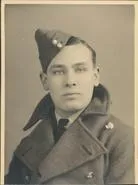Lishman, William Garvey (Warrant Officer 2)
Prisoner of War 1943-March-10


Birth Date: unkown date
Born:
Parents:
Spouse:
Home: Foxwarren, Manitoba
Enlistment:
Enlistment Date: unkown date
Service
RCAF
Unit
207 Sqn- Squadron (RAF)
Semper Paratus Always prepared
Base
RAF Langar
Rank
Warrant Officer 2
Position
Wireless Operator
Service Numbers
R/106427
PoW: 27720
Crew or Other Personnel
Lancaster W4172
Mission
Lancaster Mk.I W4172
Bombing Munich Germany 1943-March-10 to 1943-March-10
207 (B) Sqn (RAF) RAF Langar
Battle of the Ruhr
264 aircraft - 142 Lancasters, 81 Halifaxes, 41 Stirlings. 8 aircraft - 5 Lancasters, 2 Halifaxes, I Stirling - lost, 3.0 per cent of the force.
The wind caused this raid to be concentrated on the western half of Munich rather than on the centre of the city, but much damage was caused. 291 buildings were destroyed, 660 severely damaged and 2,134 less seriously damaged; these included many public buildings - I I hospitals, the cathedral, 4 churches and 14 'cultural' buildings for example - but also 3 wholesale and 22 retail business premises were completely destroyed and no less than 294 military buildings were hit, including the headquarters of the local Flak brigade, which was burnt out. The most serious industrial damage was at the B.M.W. factory where the aero-engine assembly shop was put out of action for 6 weeks. Many other industrial concerns were hit, including 141 small, back-street-type workshops which were destroyed.
The detailed Munich reports show that 208 people were killed and 425 injured. The dead included: 2 party officials on duty, IO soldiers, I Hitler Youth boy serving at a Flak site, 2 policemen and 4 foreigners. The local Flak fired 14,234 rounds of ammunition - 2,314 of 105 mm, 8,328 of 88 mm, 3,592 of 20 mm - and 7 night fighters were reported as being on duty in the Munich area but only 1 bomber, unidentified because of its explosion in the air, was shot down over the city. source: The Bomber Command War Diaries, Martin Middlebrook and Chris Everitt
Lancaster W4172 was attacked by a Fw190 night-fighter and a JU 88. Shot down by Ofw. Reinhard Kollak of the 7./NJG 4, flying Bf 110 F-4 3C+LR from Juvincourt airfield.and crashed 01:59 10 Mar 1943 near Lavannes (Marne) 12 km NE of Reims France.Having taken off from Langar 2041, 9 Mar 1943 .Both Brown and Brownhill say they were shot down after leaving the target: Brown says "while we were over Saarbrucken one of the engines caught fire and almost immediately afterwards we were attacked by a fighter.". Brownhill says "we were attacked by night fighters and the aircraft was set on fire."
Lancaster serial: W4172

Canadian Warplane Heritage Museum
The Avro Lancaster is a British Second World War heavy bomber. It was designed and manufactured by Avro as a contemporary of the Handley Page Halifax, both bombers having been developed to the same specification, as well as the Short Stirling, all three aircraft being four-engined heavy bombers adopted by the Royal Air Force (RAF) during the same wartime era.
The Lancaster has its origins in the twin-engine Avro Manchester which had been developed during the late 1930s in response to the Air Ministry Specification P.13/36 for a capable medium bomber for "world-wide use". Originally developed as an evolution of the Manchester (which had proved troublesome in service and was retired in 1942), the Lancaster was designed by Roy Chadwick and powered by four Rolls-Royce Merlins and in one version, Bristol Hercules engines. It first saw service with RAF Bomber Command in 1942 and as the strategic bombing offensive over Europe gathered momentum, it was the main aircraft for the night-time bombing campaigns that followed. As increasing numbers of the type were produced, it became the principal heavy bomber used by the RAF, the Royal Canadian Air Force (RCAF) and squadrons from other Commonwealth and European countries serving within the RAF, overshadowing the Halifax and Stirling. Wikipedia

